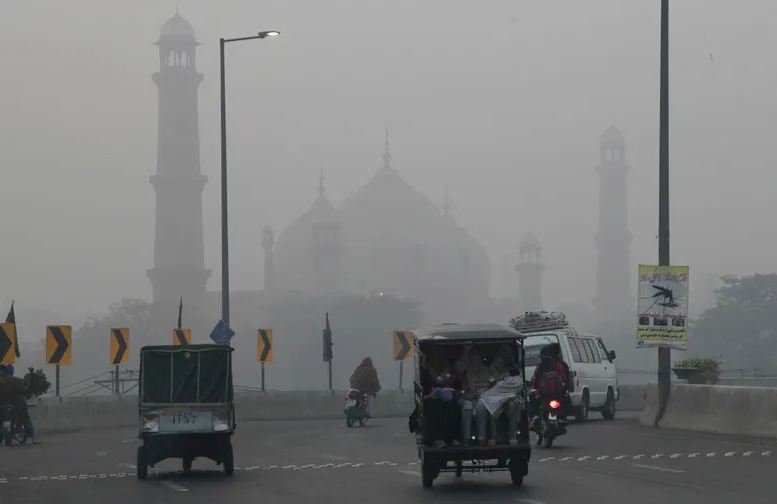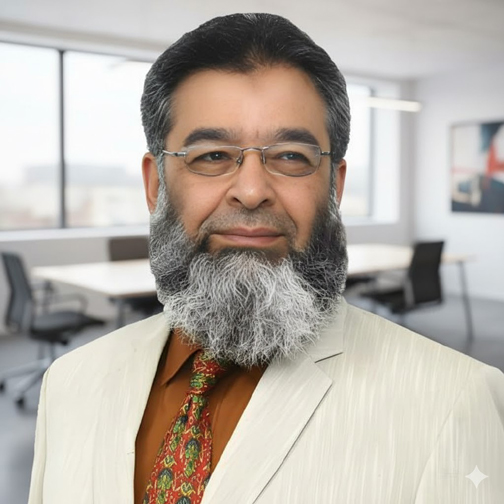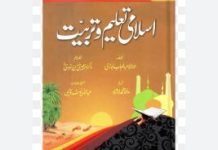By Muhammad Mohsin Iqbal
I take pride in being from Lahore, a city renowned worldwide as the city of vibrant and lively hearts. In Punjabi, it is even said that “Jinne Lahore nai vekhya, o jamya nai”—whoever has not seen Lahore has not been born. Lahore has always been more than a city; it is a feeling, a rhythm, a heartbeat that never stops. Life here moves like a river, constantly flowing day and night, brimming with color, warmth, and energy. Lahoris possess an incredible knack for adapting to any situation. They find joy in small things, gather to celebrate festivals, weddings, and even cricket victories with unmatched zeal. They stand by one another in sorrow and happiness alike. The city’s people are hospitable, generous, and ever ready to lend a helping hand. They love gardens, parks, and lively company. Whatever their financial standing, Lahoris take pride in good food, elegant clothes, and open-heartedness.
Yet, with a heavy heart, I must admit that the Lahore I grew up in—the city of flowers and fragrance—has now become one of the most polluted cities in the world. The data shared by international environmental monitoring agencies is alarming. According to the Air Quality Index (AQI), Lahore often ranks above 300 on several days of the year, reaching levels considered “hazardous” to human health. This means that simply breathing in Lahore has become dangerous. Smog, which once was an unfamiliar word for Lahoris, now covers the city like a dark shroud from October to February every year. Schools are forced to close; flights are delayed; and hospitals report a surge in respiratory and eye diseases.

But Lahore was not always like this. I still remember the time when the mornings in Lahore were filled with mist, not smog—when one could see the Shalimar Garden, the Jahangir Tomb, the Minar-e-Pakistan, and the Badshahi Mosque gleaming in sunlight, not hidden behind a grey haze. Once, Lahore and its surroundings were green and fertile. The fields around Shahdara, Thokar Niaz Baig, and Raiwind were rich with crops and trees. The air carried the scent of earth after rain, and the Ravi River, though modest in flow, brought life to the city’s landscape. In those days, even when farmers burned leftover straw after harvest, the city remained clean and breathable. The smoke dispersed quickly into open air, as there was ample greenery to absorb it.
What changed? The change came with unchecked urban expansion and reckless planning. In the last two decades, Lahore’s population has increased rapidly, now exceeding 14 million. The city that once ended at Kot Lakhpat and Mughalpura now stretches beyond Bahria Town, Defence Phase VIII, and beyond. Vast agricultural lands have been converted into housing societies. Each society brings with it new roads, vehicles, and commercial plazas—but at the cost of trees, fields, and open spaces. Planners and developers, in their race for profit, seldom paid attention to environmental sustainability. No proper waste management systems were established; industrial units were allowed to operate without emission control; and the city’s green lungs were slowly suffocated.
Even our symbols of progress, such as the Metro Bus and the Orange Line Train, though convenient for commuters, have come at an environmental cost. Massive concrete structures were built, but little was done to offset the damage to the city’s air quality. Trees were felled for road expansion, yet few were replanted. According to the experts, the Ravi Riverfront Urban Development Project, though ambitious, has further threatened the delicate ecological balance. The shrinking of natural water channels has worsened air stagnation, contributing to smog formation.
Today, the people of Lahore—especially children and the elderly—are paying the price. Respiratory illnesses like asthma, bronchitis, and allergies have increased sharply. Doctors at hospitals such as Mayo, Services, and Jinnah report a rise in pollution-related cases during the winter months. Students are compelled to stay home on “smog days,” disrupting their education. The once cheerful Lahori evenings, filled with gatherings at Food Street, Gulshan Iqbal or Race Course Park, have turned into hours spent indoors to avoid polluted air.
It is true that development and modernization are essential for a growing population. However, unplanned development is a slow poison. There are cities in the world far older and more populated than Lahore—like London, Paris, and Beijing—that once faced severe pollution but managed to reverse it through discipline and vision. Beijing, for instance, imposed strict regulations on industries, shifted factories away from urban centers, and promoted electric transport. The result is visible improvement in its air quality over the last decade. Singapore and Seoul have also integrated urban greenery into their planning, ensuring that every new development includes green zones and public parks.
Lahore can do the same. The city needs a comprehensive environmental management strategy—one that is practical, continuous, and enforceable. Planting trees once a year is not enough; it must be a civic habit. The government must encourage the use of electric and hybrid vehicles, introduce stricter emission standards, and ban the burning of agricultural waste near the city. Industrial zones must be relocated away from residential areas. The Ravi and other waterways must be revived to restore the city’s natural ecosystem. Citizens, too, must play their part by reducing waste, conserving energy, and promoting cleanliness.
Lahore is not merely a place—it is a living chapter of history. It has witnessed the grandeur of the Mughals, the wisdom of Sufi saints, and the courage of freedom fighters. It is the cultural heart of Pakistan, where poetry, art, and hospitality blend into one soul. But today, that soul is gasping for breath.
If we wish to keep Lahore alive as the city of lively hearts, we must first make it a city of clean air and open skies again. The fragrance of Lahore’s gardens, the melody of its streets, and the laughter of its people must not be lost under a blanket of smoke. The time has come to act—not tomorrow, not next year, but now—so that the next generation may say with pride: Yes, we have seen Lahore, and it is still the city that was never truly born to die.

















